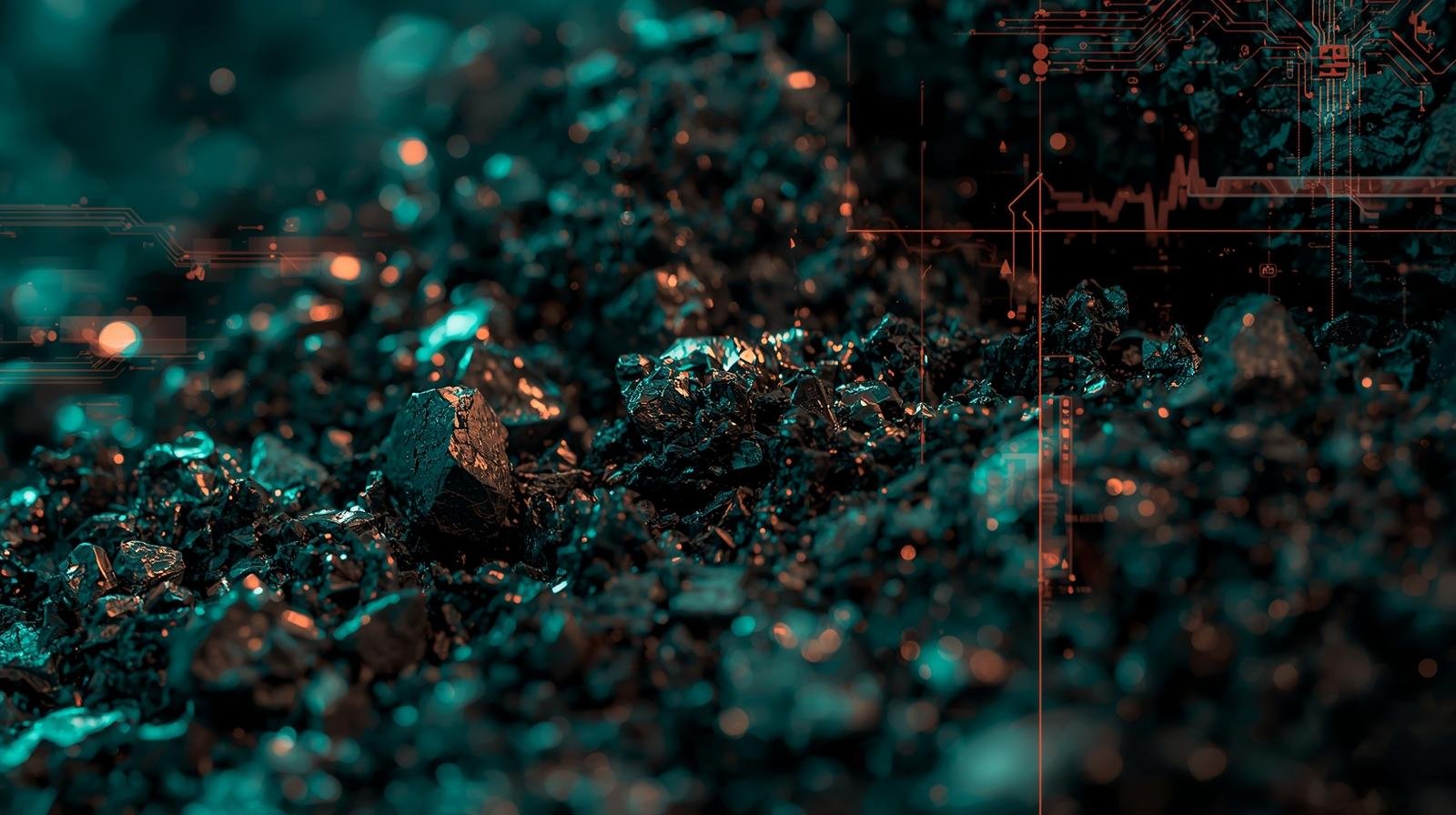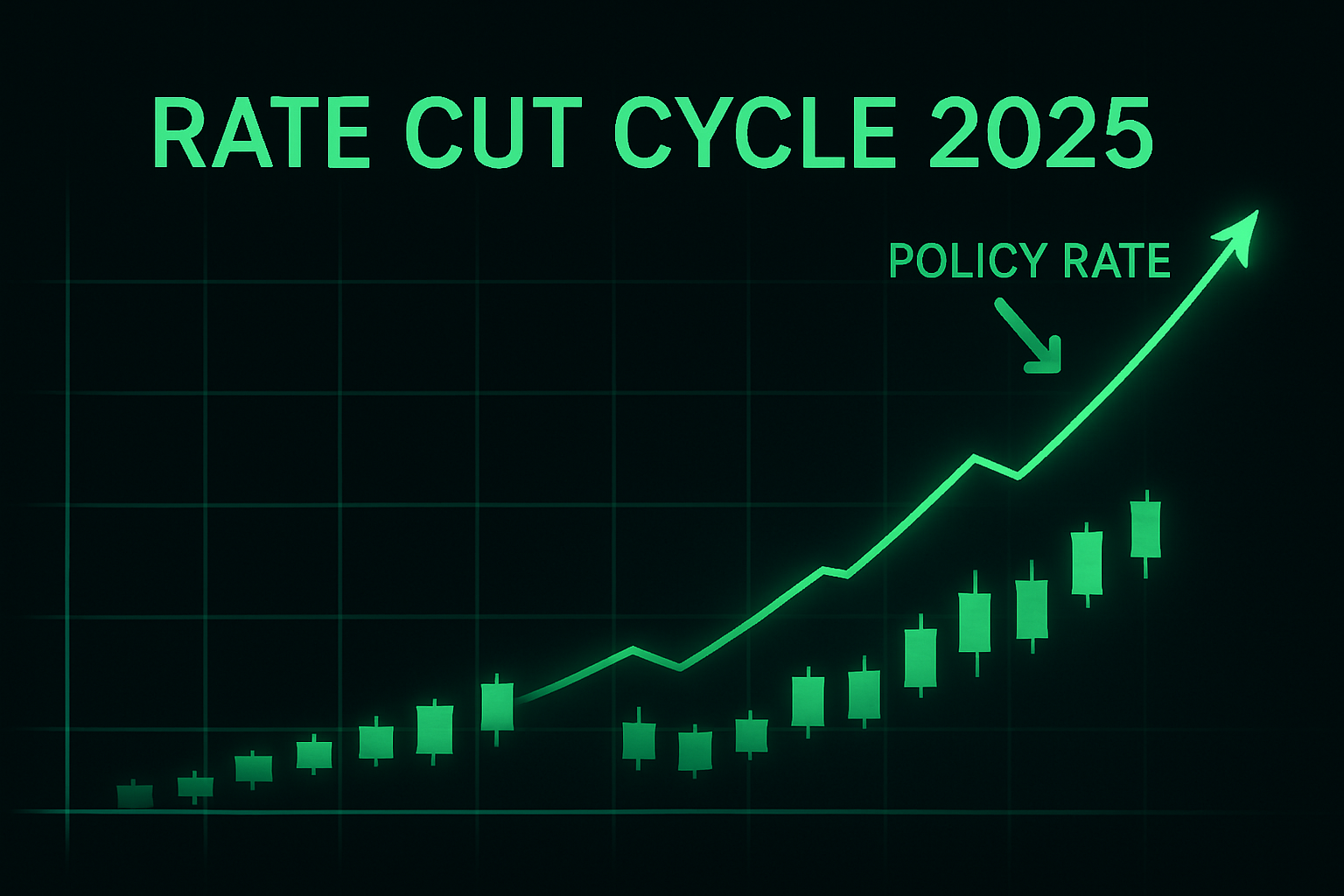The story starts with a bureaucratic phrase that doesn’t sound like it should move markets: “announcement number 61.” In Beijing, that’s the label attached to China’s latest tightening of export controls on rare earths—those obscure elements that quietly animate modern life. It’s the kind of policy notice that rarely makes front pages, yet within hours commodity desks were buzzing, defense contractors were parsing specs, and a familiar chart formation appeared on trader screens: rare-earth miners ripping higher, everything else trying to figure out what had just changed.
What changed wasn’t simply the list of metals—holmium, erbium, thulium, europium, ytterbium—now under stricter scrutiny at the border. It was the reminder that a single country still holds the most decisive lever in a supply chain that runs straight through the electric car in your driveway, the turbine on the horizon, and the racks of servers translating prompts into tokens. The magnetism of the moment—literally, in the case of neodymium-iron-boron magnets—wasn’t about novelty. It was about timing. Demand from the energy transition and the AI build-out is colliding with geopolitics again, and the commodities most people never think about have become the fulcrum of the next bargaining round between great powers. China’s move is a policy brick through the window of complacency and a reminder that resilience is not a press release; it’s a system you have or you don’t.
The hidden architecture of modern power
There are only a handful of moments in the past fifty years when a strategic commodity suddenly asserted itself in public consciousness: the oil shocks of the 1970s, OPEC’s periodic thunders, Russia’s gas wars, the chip shortages of the pandemic. Rare earths had their cameo in 2010, when a diplomatic spat spilled over into export hiccups and sent prices soaring. Then the news cycle moved on. Manufacturing didn’t. Over the next decade, China didn’t just dig more out of the ground; it perfected the messy chemistry that turns rocks into essential inputs. Mining is visible politics. Separation and refining are the unglamorous, capital-intensive art that decides who is truly in charge.
The United States Geological Survey keeps the score with admirable sobriety: the world has multiple miners, but only one dominant processor. The drumbeat is consistent across official data sets and industry handbooks: China refines the vast majority of rare earths and is even more dominant in downstream magnet production. The consequence is subtle but profound: even when ore is dug in California or Western Australia, the path to a finished magnet often bends back through Chinese industry before it returns to an American SUV or a European wind farm. It is this kink in the supply chain—less the mine, more the mill—that turns a customs code into a geopolitical instrument. USGS summaries and the IEA’s Critical Minerals Outlook read like footnotes to the argument: the world is trying to diversify; the bottleneck is not being built fast enough.
From physics lab to factory floor
It’s worth pausing on what we mean by “rare earths,” because the name misleads. They’re not particularly rare in the crust; they’re rare in the form and concentration that industry requires. They sit as a family of 17 elements—scandium and yttrium on the edges, lanthanides across the middle—whose electronic quirks make them ideal for permanent magnets, specialized lasers, fiber optics, guidance systems, and catalytic converters. In the global economy’s current configuration, two applications tower above the rest: the magnets that spin inside electric vehicle motors and those that capture wind in utility-scale turbines. A third, quieter demand center is emerging in the heat and hum of data centers, where armies of fans rely on tiny, ruthlessly efficient motors and magnets to cool the machines teaching themselves our languages.
Substitutes exist on paper and in labs. Engineers can redesign a motor to use less dysprosium or swap a magnet for an induction motor that leans more on copper. But substitutes are not free lunches. They add weight, cost, or efficiency penalties, and they generally arrive on their own timelines, not on the timetable of a policy clash. The paradox is familiar from other energy-transition staples: cleaner systems often depend on dirtier processes upstream, whether it’s nickel from laterite ore or graphite baked in coal-heavy grids. Rare earths carry their own burden—acidic leaching, complex waste streams, occasional traces of thorium that trigger a thicket of regulations. That doesn’t make the transition a fairy tale; it makes it engineering. If anything, the dissonance is a sign of maturity: we are moving from slogans to the dull heroics of industrial policy.
A market that trades like a headline
When controls tighten, traders do what they do best: price the unknown. After Beijing’s latest notice, U.S. and Australian names jumped, the sector ETF ticked higher, and commentaries dusted off a familiar phrase—“supply chain resilience premium.” None of this guarantees that prices explode tomorrow. It does signal that investors are relearning an old lesson: when a material is strategic, its price is a political variable, not just a function of extraction costs and inventory levels. And in rare earths, spot prices are the visible tip of a market still dominated by long-term offtake agreements, bilateral relationships, and the creditworthiness of companies trying to finance processing plants with messy cash-flow profiles. The public sees the ETF line inch up. The banker sees a 25-year permitting story and a debt package that hopes the capex curve behaves.
Consider the U.S. pathway. Mountain Pass in California is a symbol as much as a mine: proof that Western production never fully died, but also a reminder that shipping concentrate out for separation was the business model for too long. Recent investments aim to close the loop domestically; meanwhile, off-takers push to lock in volumes as insurance. Australia’s Lynas, the non-Chinese producer that has become a shorthand for “optionality,” has invested in a Kalgoorlie facility to perform cracking and leaching at home and reduce regulatory pressure on its Malaysian plant. It’s a blueprint for geopolitical arbitrage: shift the dirtiest chemistry closer to mining, streamline the cleaner separations where permits are more tractable, and diversify logistics. It won’t make headlines like a mine ribbon-cutting. It does change the risk math. Lynas’ updates and local coverage of Kalgoorlie’s progress underscore how granular these moves are—and how much patience they require.
Politics with a periodic table
It’s tempting to frame this as a commodity story with geopolitical overtones. It’s the other way around. The controls are a diplomatic instrument first, a commodity constraint second. In Washington, Brussels, Tokyo and Seoul, rare earths are filed in the same drawer as advanced lithography machines and quantum components: choke points with compounding leverage. That’s why the white papers read like supply chain ethnographies. They trace not just mines and mills, but the firm-level relationships that determine who can credibly ship magnet-grade NdPr, who can deliver heavy rare earths without quality drift, and who can finance a recycler that deals in dusty powders instead of shiny barrels.
And yet, there’s a quieter contest unfolding inside ministries and boardrooms: how to define success. Is it autarky, where every essential input is sourced within the bloc? That’s a fantasy in a world optimized for thirty years around efficiency and global scale. Is it diversification, where the goal is simply to reduce concentration below a threshold that turns a supply chain into a weapon? More plausible, but still costly. Or is it a new form of interdependence, where transparency and redundancy make coercion less attractive because retaliation can be met in kind? The choice matters for capital allocation. Autarky needs subsidies without end. Diversification needs time and a thick layer of midstream expertise. Managed interdependence needs trust—and a political climate willing to tolerate it.
What AI has to do with magnets
The link between algorithms and minerals can sound contrived until you walk through a data hall. AI is compute-dense, power-hungry, and thermally unforgiving. Every watt fed into a GPU must eventually find its way out as heat. That means fans, pumps, and precision motors—multiplied by thousands, scaled across campuses. No one is building a data center around dysprosium or terbium, but the cumulative demand for high-performance magnets is rising with the world’s appetite for inference. The sector used to be a rounding error next to autos and wind. It is still smaller; it is no longer negligible. If the big story of the decade is that “AI is physical,” then rare earths are part of the physics. Restrict magnet inputs, and you tax the infrastructure of intelligence. Beijing understands that; so do the companies sketching new data-center campuses on the backs of envelopes.
The environmental bill comes due
Critics often say, with some justice, that rare earths are “rare” not in geology but in political will: few countries want the waste-handling responsibilities that come with separation chemistry. Inner Mongolia’s tailings lakes are the stock images that animate op-eds; the better, harder story is the global search for cleaner process routes, closed-loop water systems, and recycling methods that actually scale. The recycling pitch is seductive—a circular magnet economy that feeds itself—but short product lifecycles in consumer electronics mask the long lives of motors in cars and turbines. The metals aren’t where we can easily fetch them yet. They’ll come back in trickles before they arrive in waves, and the economics will depend less on green virtue and more on logistics and yield.
That’s where policy will matter most. Capital likes clarity. If governments want recycling to be more than a slide deck, they’ll have to make the economics pencil: credits that reward recovered material quality, permitting regimes that recognize the difference between a refinery and a smelter, public procurement that pays for secure supply rather than just the lowest bid. Europe’s Critical Raw Materials Act inches in that direction; the United States has started to mix Defense Production Act tools with industrial policy learning by doing. The point isn’t to romanticize state planning. It’s to accept that the market won’t birth midstream capacity on rhetoric alone.
The new grammar of risk
Portfolio managers once treated materials like these as idioscratic slices of the small-cap world: great if you caught the cycle, painful if you didn’t. That framing still works at the stock-picking level. It fails at the macro level. When a country that dominates processing decides to gatekeep exports, miners rerate, but so do industries three, four, five steps downstream. Automakers face design reviews in the middle of model cycles. Turbine makers re-price bids for projects already delayed by wind’s bruising year. Defense supply chains stretch beyond comfortable buffer inventory. And AI infrastructure planners discover that the bottleneck they worried about—power—has a logistical twin in materials. The risk is no longer just volatility in oxide prices. It’s correlation reasserting itself through policy.
So what does prudent positioning look like when policy risk is the asset? One answer is the obvious one: exposure to non-Chinese miners and processors, carefully chosen and sized for their capital intensity and country risk. Another is less visible but arguably more important: exposure to the industrial plumbing that will exist regardless of who controls which border—vacuum furnaces, specialty alloys, precision machining, and the companies that learned to ride the cycles without marketing themselves as geopolitical hedges. The trade in 2025 is about headlines. The investment in 2026 and beyond will be about execution.
Scenes from the reshoring experiment
Walk through Kalgoorlie and you hear a different vocabulary than on CNBC: acid tanks, leach kinetics, residue management. That’s the sound of a supply chain trying to grow a middle. It isn’t glamorous, but it’s the point. Mines without midstream are commodities on a boat. Mines with midstream become bargaining chips in the rules-based order we keep saying we want. Across the Pacific, U.S. projects aim to prove that a closed-loop, magnet-grade supply is more than a patriotic flourish. Contracts with automakers and defense integrators are the bridge between aspiration and bankability. Recycling pilots, meanwhile, look to collect magnets where they actually are—motors that come back after a decade of service, appliances that stack in warehouses, turbines that reach end-of-life in batches, not in daily headlines. The math improves slowly, then suddenly.
If you’re searching for the end state, don’t. There isn’t one. There’s a moving equilibrium—somewhere between concentrated efficiency and distributed resilience—defined by technology, energy prices, permitting politics, and the patience of capital. But there is a direction of travel. Each control, each subsidy, each offtake and pilot plant is a nudge away from the era when a cheap molecule or a permissive regulator decided the world’s industrial map.
What matters next
Three tells will say more than any press conference. First, whether processing capacity in the U.S., Australia, and parts of Asia actually reaches magnet-grade quality at volumes that matter. Announcements fade; quality is stubborn. Second, whether automakers and turbine makers re-design for material thrift in ways that don’t punish performance. The best substitute for heavy rare earths is often a clever motor. Third, whether governments shift from episodic funding to boring predictability. Industrial policy is not a viral thread. It is a budget line on repeat.
There is no clean moral in this story, no neat arc in which the greener path also turns out to be the simplest. There is, however, a workable realism. We can accept that “strategic autonomy” is neither free nor absolute, that diversity of supply beats dreams of purity, and that the most patriotic technologies are often the ones that keep their promises quietly, in factories far from cameras. If we get that right, an export control in Beijing will still move stocks. It will not move the world.





